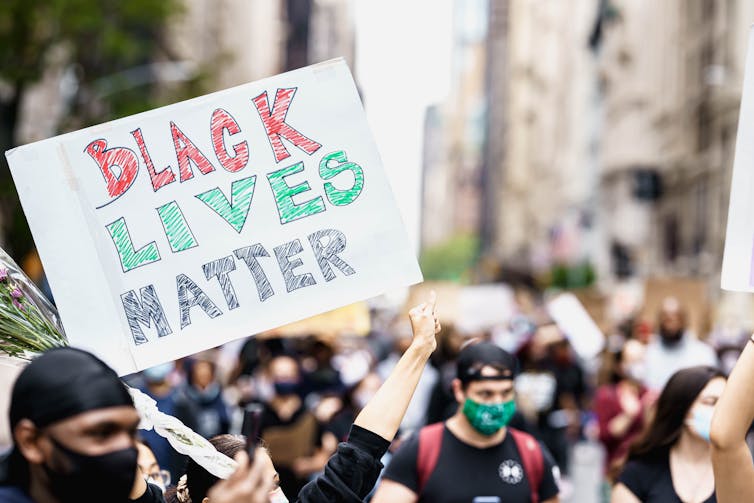By now, we know what happened to George Floyd who died after a US police officer kneeled on his neck.
His tragic death has sparked worldwide protests against racism and police violence. The protests have moved US lawmakers to introduce a bill to end excessive use of force by police. In the UK and Belgium, statues of racist colonial figures were removed. And films and TV shows that promote racism have been dropped.
The police killing of George Floyd as bystanders watched shows us how the US struggles with racism. But structural racism is not exclusive to the US. Like the COVID-19 pandemic we’re currently facing, racism is present in every nook and corner of this planet.
As we must work together in combating COVID-19, we must also curb racism globally.

The spread of racism
People are debating whether the COVID-19 pandemic that has killed more than 400,000 people is human-made, brought to us through the unintended and unforeseen side effects of industrial and exploitative modernity.
For the pandemic of racism, there is no question it’s human-made. While COVID-19 is spread through the SARS-CoV-2 virus, the pandemic of racism originates from a delusional view of a group of people thinking they are better than other people who look different from them.
White European elites have used this world view to rationalise their imperialist, colonialist and racist policies, sustaining their claim that they are culturally and biologically superior. This world view led to colonisation of the world by White Europeans, slavery of Africans in their homeland, elsewhere and in America, and to the horror of the National Socialism of the German Nazis, which happened in Europe only 75 years ago.
Led by Adolf Hitler, the Nazis used scientific racism rooted in the period’s social Darwinism to claim Germans were superior to all other groups and constituted a “master race of Aryans”. They used this to justify the systematic and industrial killing of around 11 million people from 1933-1945.
National Socialism, commonly known as Nazism, exploited and extended such eugenicist logic. They killed not only two-thirds of the Jewish population in Europe at the time – as the world knows it – but also millions of non-Jewish people, comprising of Africans, the Romani,the Sinti people, and what the Nazis labelled as “asocial” or “unworthy” people, like those who were homosexual, deaf, blind, disabled and mentally ill.
The fact that we rarely hear about the killing of millions of other victimised groups may reflect the structural racism of our world.
It is thus a painful irony that the US, part of the Allied forces that defeated the Nazis and spurred denazification, only gave black Americans universal voting rights in the 1960s. Structural racism against African Americans continued.
Meanwhile, around the world, post-colonial nations continue to struggle with white hegemony.
In the Asia-Pacific region, in countries that were formerly European colonies, people still consciously or unconsciously continue to use racial logic in their everyday realities.
Dark complexions are associated with menial labour, while fairness or lighter skin is associated with higher social status and cultural refinement. In a more subtle but no less hostile way, consumer society keeps racism alive by promoting beauty concepts that tend to celebrate and glamorise people with fair skin.
Curbing the pandemic of racism
Ending racism is both our individual and collective task. Here, it is helpful to recall socio-cultural anthropologist Franz Boas’s ideas challenging Eurocentrism. He argued that culture is not something absolute. There is no one size fits all, and culture relates to its context. He pushed for a democratic understanding of culture and race, respectful of differences so that no single group is considered as the jewel in the crown.
At an individual level, overcoming racist perspectives and stopping racist behaviours start with changing our worldview. We should blur the concept of self and others and simply treat everyone, whatever their skin colour, equally. We can start by stop believing in white supremacy and ending the vilification of dark skin.
At organisational and community levels, we should oppose contemporary popular ideologies of scientific racism. For example, admission offices at schools, public services and corporations should not discriminate against people based on their race or colour. Organisations should actively support people from historically oppressed groups who due to racist discrimination are underrepresented in all areas of public life.
For the business sector, the hegemony of racialised politics of skin colour products must also be corrected.
Last but not least, governments around the world should work towards diminishing structural inequalities created by racist social hierarchies.
The death of George Floyd must not be in vain. His death has spurred a worldwide movement to overcome the pandemic of racism.
All of us should deconstruct our old “normal” of white supremacy and move toward a belief in racial equality. This means sincerely seeing every person as having equal respect and dignity.


